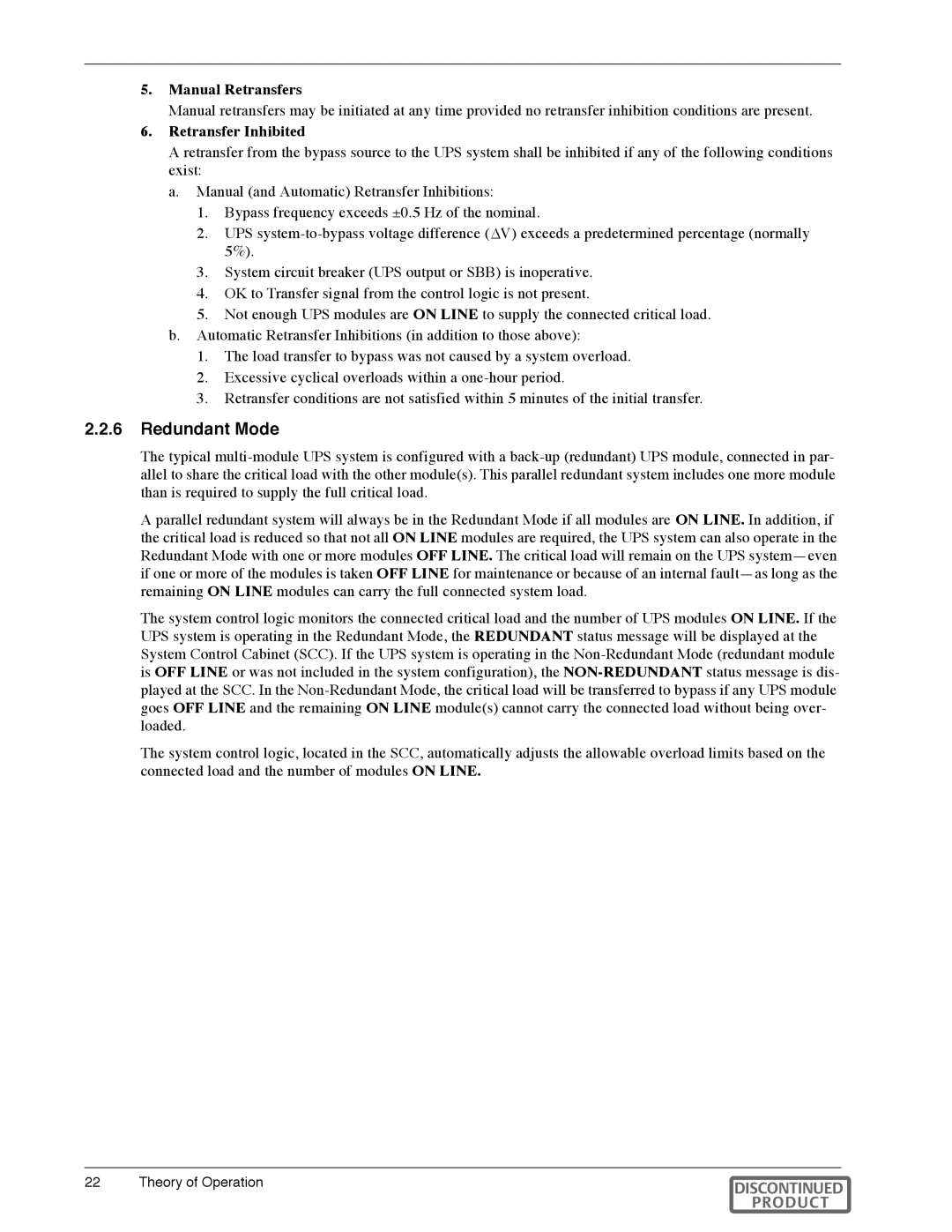
5.Manual Retransfers
Manual retransfers may be initiated at any time provided no retransfer inhibition conditions are present.
6.Retransfer Inhibited
A retransfer from the bypass source to the UPS system shall be inhibited if any of the following conditions exist:
a.Manual (and Automatic) Retransfer Inhibitions:
1.Bypass frequency exceeds ±0.5 Hz of the nominal.
2.UPS
3.System circuit breaker (UPS output or SBB) is inoperative.
4.OK to Transfer signal from the control logic is not present.
5.Not enough UPS modules are ON LINE to supply the connected critical load.
b.Automatic Retransfer Inhibitions (in addition to those above):
1.The load transfer to bypass was not caused by a system overload.
2.Excessive cyclical overloads within a
3.Retransfer conditions are not satisfied within 5 minutes of the initial transfer.
2.2.6Redundant Mode
The typical
A parallel redundant system will always be in the Redundant Mode if all modules are ON LINE. In addition, if the critical load is reduced so that not all ON LINE modules are required, the UPS system can also operate in the Redundant Mode with one or more modules OFF LINE. The critical load will remain on the UPS
The system control logic monitors the connected critical load and the number of UPS modules ON LINE. If the UPS system is operating in the Redundant Mode, the REDUNDANT status message will be displayed at the System Control Cabinet (SCC). If the UPS system is operating in the
The system control logic, located in the SCC, automatically adjusts the allowable overload limits based on the connected load and the number of modules ON LINE.
22 | Theory of Operation | DISCONTINUED |
|
| PRODUCT |
